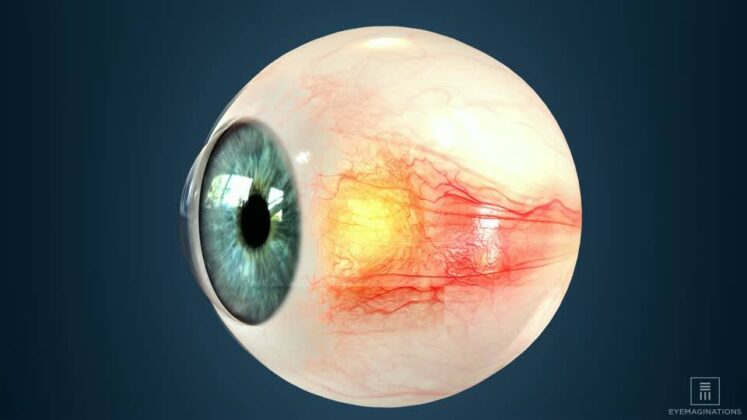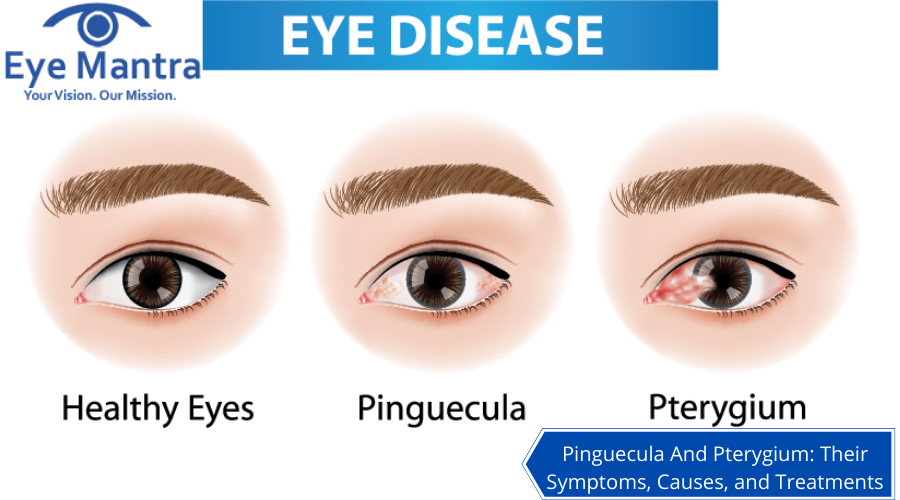Contents
What Is Pinguecula?
Pinguecula is a non-cancerous growth that occurs on the conjunctiva in a white tissue near the cornea. It is a yellow patch or lump and usually forms on the inside of the eye, near the nose. Pinguecula and pterygium are different from each other.
Causes of Pinguecula
Pinguecula is caused by changes in your conjunctiva muscles. These changes are linked to the irritability caused by sunlight, dust, and wind, and are more common as we grow older. These nodules or growths may contain a combination of protein, fat, or calcium, or a combination of these three.
Symptoms of Pinguecula
Pinguecula appears as a small, yellow, or growing lump, not a web-like tissue/veins. Symptoms can vary from bad to worse and may include:
- Irritation of the eye or feeling of something stuck in the eye
- Leprosy
- Itching, redness, and swelling in the eye.
Treatment of Pinguecula
Treatment of pinguecula may include small eye drops or surgery that may affect vision. Our doctors give us eye drops, if necessary, and use the safest and most advanced surgical procedures when surgery is needed. If you see a small lump in the white area of your eye, you may have a pinguecula that needs treatment.

Non-Surgical Treatment For Pinguecula
Changes in conjunctiva eye tissue can lead to the formation of pinguecula. As we grow older, our conjunctival tissues change, making us more prone to shape like pinguecula. Natural Factors, such as dust, wind, or sun exposure, can also contribute to these changes.
Pinguecula is usually yellow in color and forms on the white part of the eye near the nose. The most common symptom is a feeling of the skin or other rubbish on your eye. Your eye may also feel dry or itchy and may appear red or swollen.
Most cases of pinguecula are mild and require non-surgical treatment such as eye drops. After a thorough examination, our doctors may prescribe eye drops or ointments.
Surgical Treatment For Pinguecula
To a lesser extent, surgery is recommended to remove the pinguecula. We would recommend surgical treatment when growing up, it is:
- Close to the cornea, threatening to affect vision
- Causes great discomfort.
- Makes wearing contact lenses uncomfortable or makes them look wrong
- Affects the beauty of the eye.
What Is Pterygium?
The cornea is a clear frontal lobe. This dangerous or cancer-free growth is often the result of a fungal infection. Pterygium usually does not cause problems or needs treatment, but can be removed if it interferes with your vision.
Causes of Pterygium
The exact cause of pterygium is unknown. Another explanation is that too much exposure to ultraviolet (UV) light can lead to this growth. It often occurs in people who live in warmer climates and spend more time outdoors in sunny or windy areas. People whose eyes are constantly exposed to certain things have a higher risk of developing this condition. These items include:
- Pollen
- Sand
- Smoke
- The wind
Symptoms of Pterygium
Pterygium does not always show symptoms. When this happens, the symptoms are usually mild including redness, blurred vision, and eye irritation. A thick or large pterygium can also make you feel like you have something unknown in your eye. You may not be able to continue wearing contact lenses if you have pterygium due to discomfort
.
Treatment of Pterygium
Pterygium usually does not need treatment unless it blocks your vision or causes great discomfort. Your optometrist may need to examine your eyes from time to time to see if growth is causing any vision problem.
Medications of Pterygium
If pterygium causes severe irritation or redness, your doctor may prescribe eye drops or ointments containing corticosteroids to reduce inflammation.
Surgery of Pterygium

Your doctor may recommend surgery to remove the pterygium if the eye drops or ointments do not provide relief. Surgery is also performed when pterygium causes a loss of vision or in case of a condition called astigmatism, which can lead to blurred vision.
There are a few risks associated with these activities. In some cases, pterygium can return after surgical removal. Your eye may feel dry and irritated after surgery. Your doctor may prescribe medication to reduce the risk of again developing pterygium.
Pterygium vs Pinguecula
There are several differences between pterygium and pinguecula. These both conditions are caused by excessive UV light, dry area, or exposure to dust or dirt. Both grow in the conjunctiva.
Both pterygia and pingueculae occur in people between the ages of 30 and 50, occurring uncommonly in young adults or the elderly. However, they have different looks, symptoms, and treatment plans.
Pterygium
This is a growth that usually starts in the inner corner of the eye and moves to your iris. It may look fleshy, like skin, and there will be blood vessels.
A lump of flesh will not affect your vision much, so your eye doctor may recommend immediate surgery. However, it can grow rapidly and spread to your cornea, where your optometrist may recommend that the pterygium be removed. You may also have a surgical removal if you look strange, or if your eye is itchy or watery in a way that the eye drops cannot control.
Pterygium can start as a pinguecula, or it can grow on its own. Up to a certain size that covers your vision or causes problems with your corneal condition, pterygium is dangerous.
Steroid eye drops can treat irritating symptoms, which include the following:
- Itching
- Redness
- Inflammation
- Common discomfort
Pinguecula
While this condition appears abnormal and occurs in the conjunctiva, pinguecula appears to be different from pterygium. Pinguecula is a yellow bump, raised on the surface of your eye that is a deposit of calcium, fat, or protein.
With continuous exposure to UV, a pinguecula can become pterygium. It may also continue to grow, and the accompanying symptoms may be worse.
Like pterygium, it’s okay until it starts to affect your vision. Rarely do these develop enough to cause vision problems, so your eye doctor may prescribe eye drops to treat the symptoms. Surgery is rarely a solution for pinguecula.
You can get these symptoms from pinguecula development:
- The eyes are irritated
- Itching or feeling strong
- Dry eyes
- Redness
Pinguecula surgery is considered if your symptoms are severe and cannot be treated with eye drops. Surgery is sometimes recommended when the pinguecula grows, turns into a pterygium, and begins to pass through the cornea.
Pinguecula and pterygium both are different eye problems with different symptoms and treatment. Therefore, it is necessary to choose the right doctor for the treatment process. Make sure you trust your doctor and go for your regular checkups. Missing even one checkup can be dangerous to the eyes. If you have any problem even after the surgery, contact your doctor as soon as possible.
For any eye-associated issue, visit our hospital in Delhi now!
Visit our website- www.eyemantra.in to know more about us.
Call 8851044355 or mail us at [email protected] to book your appointment. Our team of great and experienced ophthalmologists will always suggest the best options for your eyes.



